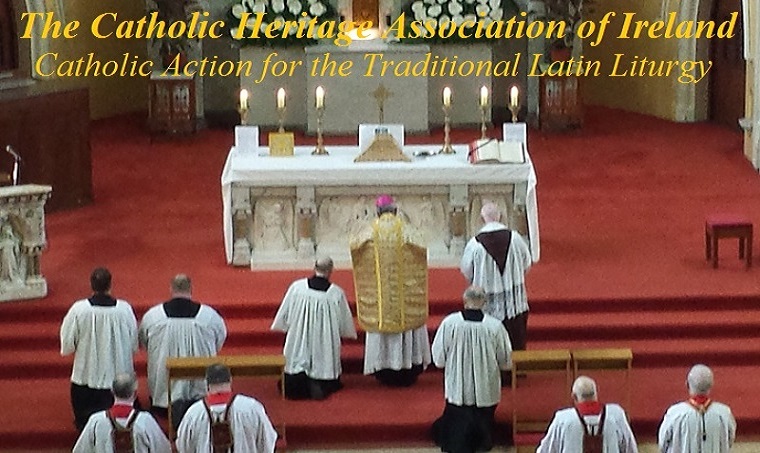Readers of CHRISTVS REGNAT may remember an extract from Bishop Bossuet's
Histoire des variations des églises protestantes, where he wrote: "heresy, however old, is always in itself a novelty; to better retain their title of novelty, innovates daily and daily changes its doctrine." Bishop Bossuet might be a bit stumped if he visited some Parishes in Ireland, where the local Catholic Church, whether it is centuries old or decades old, has had makeover after makeover within living memory, while the local Anglican edifice has kept what is beautiful and ancient.
The Anglican church of Aghade in the Parish of Ballon retains many fine interior features including splendid apse decoration and a communion rail.
The Catholic Parish Church of Ballon is dedicated to Ss. Peter and Paul. Their images are to be found in the Strawberry Hill Gothic wooden reredos that has been mercifully retained. For the rest, frankly, I just don't get it...
A fine marble monument in the nave to the Parish Priest who built the Church reads:
Sacred to the memory of REV. JOHN KEHOE P.P. Ballon and Rathoe, born in parish of Bagnalstown, 2nd October 1815, after a year's preparatory study in Carlow College, he, in 1837, entered Maynooth, from which, after a conspicuously distinguished career, he was promoted to the Sacred Priesthood, in the year 1844. His first mission was the Curacy of Clonaslea, next, that of Arles, whence he was transferred, in 1849, to Ballon, where, although, meantime, offered high preferments, he chose to live and toil as Curate for twenty further years. On resignation of REV. Wm. Kinsella P.P. in 1869, he was appointed pastor of the parish, to the temporal as well as spiritual welfare of whose people, he had devoted all the vigour and earnestness of his earlier years. His kindness to the poor, and his zeal for God's glory, should ever be held in cherished remembrance by those, amongst whom to spend himself in unceasing exertion, was but a labour of love. After a most exemplary and useful life he calmly resigned his sinless soul to his Creator on July 21st A.D. 1883. May he rest in peace. Amen.
A monument in the Gospel Transcept reads:
THIS MONUMENT has been erected by Mr. Patrick Conran in memory of his Brother, the very Revd. Jas. Conran, formerly Vicar capitular of the Diocese of Kildare & Leighlin, & for 23 years P.P. of Ballon & Rathoe. He departed this life the 9th of August 1825, in the 67th year of his age.











 It was our Catholic heritage. Why couldn't they leave it alone?
It was our Catholic heritage. Why couldn't they leave it alone?


































































































